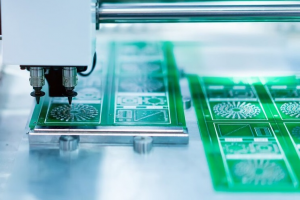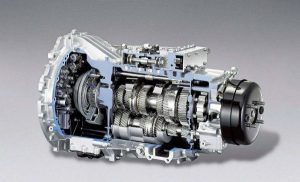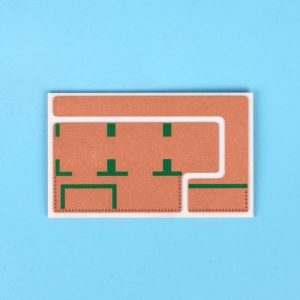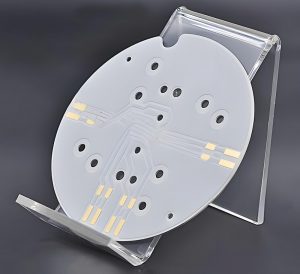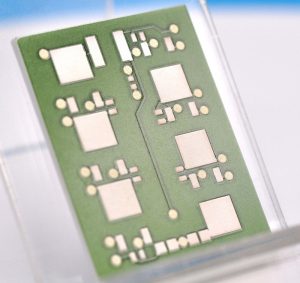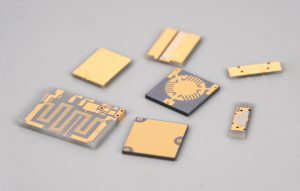What is an alumina circuit board? As a unique circuit board material, it is emerging in the electronics field with its excellent performance and advantages. It uses alumina as the main material, bringing new opportunities for performance improvement and miniaturization of various electronic devices.
What is an alumina circuit board?
Alumina circuit board is a circuit board that uses alumina ceramic as a substrate. This circuit board has excellent electrical insulation properties, high thermal conductivity, excellent soft solderability and high adhesion strength. It can be etched with various graphics like a PCB board and has a large current carrying capacity.
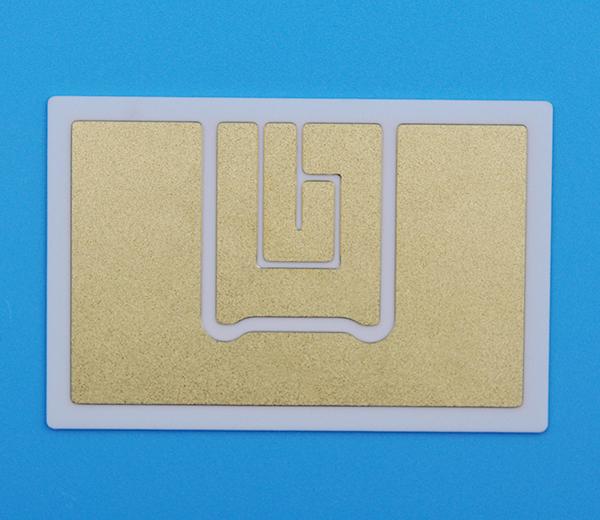
Alumina ceramic circuit board is an ultra-thin composite substrate made by bonding copper foil directly to the surface (single or double sides) of an alumina (Al2O3) ceramic substrate at high temperature through a special process.
Alumina ceramic circuit boards are widely used in electronic devices that require high performance and high reliability, such as solar applications, voltage regulators, amplifier circuits, and memory modules.
Alumina ceramic substrates are mainly composed of white amorphous powder, commonly known as alumina or simply Al2O3. It has excellent properties, such as high wear resistance, acid and alkali corrosion resistance, excellent performance at high temperatures (1600-1700 degrees Celsius), etc.
What types of alumina circuit boards are there?
Ordinary alumina ceramics are classified according to their Al2O3 content, including 99%, 96%, etc. 99% alumina has high purity, white or ivory color, and is widely used in various applications, including lamps, electronic devices, and wear-resistant components. 96% alumina is widely used in various electronic applications while providing good thermal conductivity and insulation properties.
96% alumina:
- Suitable for thick film circuit substrates, with excellent electrical insulation properties, mechanical strength, good thermal conductivity, chemical durability and dimensional stability.
- Its surface roughness is generally 0.2~0.6μm, and the maximum operating temperature of the substrate can reach 1600℃.
- 96% alumina has become an economical choice for manufacturing hybrid microelectronic circuits due to its availability, low cost and technical quality.
99% Alumina:
- Commonly used for most thin-film electronic substrate applications such as sputtering, evaporation, and chemical vapor deposition of metals for circuit generation.
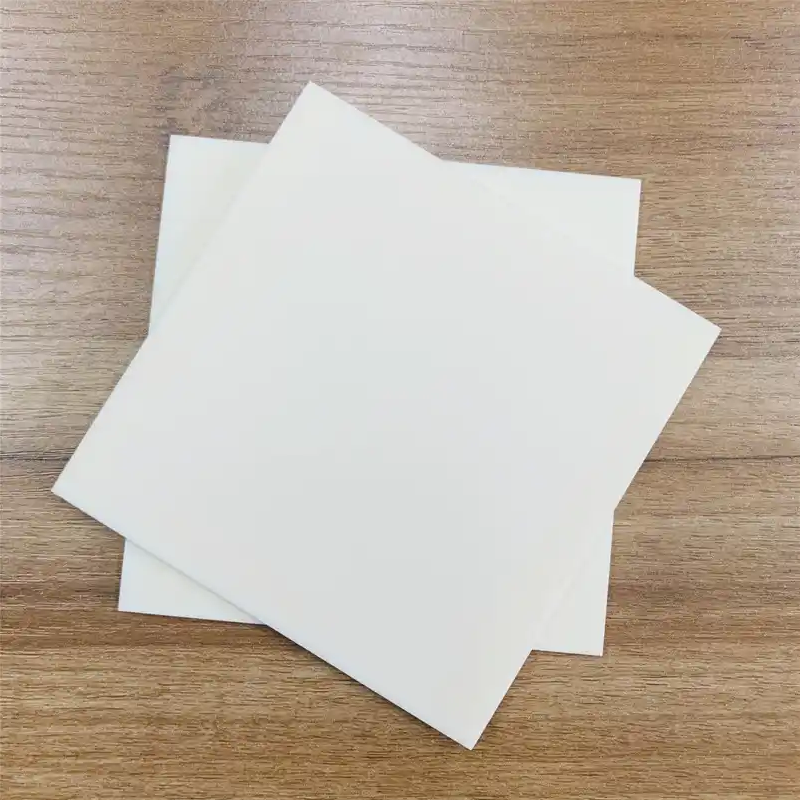
- 99% Alumina has higher purity, smaller grain size, and the prepared substrate has excellent surface smoothness (surface roughness is generally 0.08~0.1μm), and the maximum use temperature of the substrate can reach 1700℃.
- It has high mechanical strength, low thermal conductivity, excellent electrical insulation, good dielectric properties, and good corrosion resistance and wear resistance.
What are the advantages of alumina circuit boards?
The advantages of alumina circuit boards are mainly reflected in their physical and chemical properties, which make them widely used in many fields.
- High hardness: The hardness of alumina ceramic plates is very high, second only to diamond and sapphire, and has excellent wear resistance and corrosion resistance.
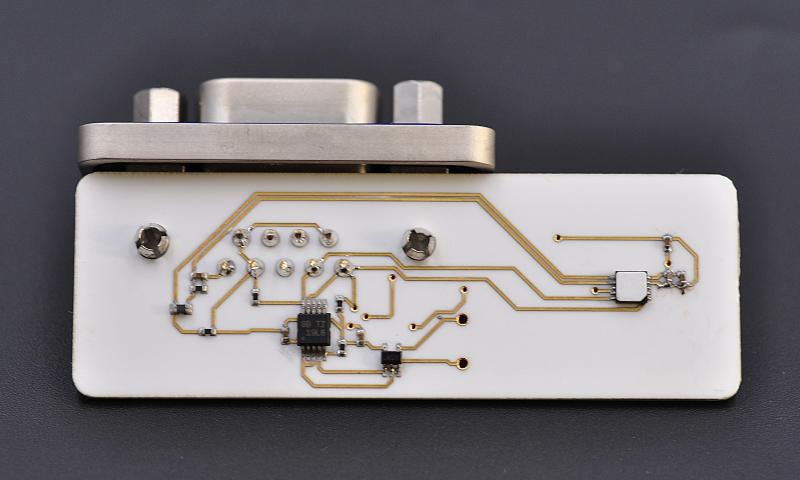
- High melting point: The melting point of alumina is as high as 2072℃, which means that alumina circuit boards can work for a long time in high temperature environments without being affected and maintain stable performance.
- Good insulation performance: Alumina ceramic boards have good insulation performance and can effectively isolate the conduction of current and heat.
- Excellent heat dissipation performance: In LED lighting and high-power electronic devices, alumina circuit boards are widely used due to their excellent heat dissipation performance.
- Lightweight: Compared with other materials, alumina ceramic boards have a lower density and lighter weight, which can greatly reduce the load of the equipment.
- Chemical stability: Alumina is an electrical insulating material with high resistivity, good chemical stability and good corrosion resistance.
What are the disadvantages of alumina circuit boards?
The disadvantages of alumina ceramic PCBs mainly include high cost, fragility, inferior thermal conductivity to other materials, complex manufacturing process and high price.
- High cost: Compared with plastic packaging, alumina ceramic PCBs have higher process temperature requirements, which leads to relatively high costs.
- Fragile: Alumina ceramics are relatively fragile, and compared with aluminum nitride ceramic substrates, alumina ceramics are more fragile.
- Thermal conductivity is not as good as other materials: Although alumina ceramics have certain thermal conductivity, their thermal conductivity is usually between 25W and 50W, while the thermal conductivity of aluminum nitride ceramic substrates can reach 190~260W. In comparison, the thermal conductivity of alumina ceramics is poor.
- Complicated manufacturing process: Due to the high hardness of alumina ceramics, mechanical processing is more difficult, which increases the cost of its precision machined parts.
- Higher price: Due to the above factors, the price of alumina ceramic PCBs is usually higher, about 3~10 times that of resin PCB boards.
What are the uses of alumina circuit boards?
Alumina circuit boards are widely used and are mainly used in the following aspects:
- Electronic industry: Alumina ceramic circuit boards have become the preferred material in the manufacture of electronic components such as semiconductor devices and integrated circuits due to their excellent insulation properties and high temperature resistance.
- Optoelectronic industry: In the field of optoelectronics, alumina ceramic circuit boards also perform well. Due to their high optical transparency and chemical stability, they are widely used in the manufacture of optoelectronic devices such as lasers and LEDs.
- Automobile Industry: In terms of automobile headlights, the popularity of high-power LED headlights has put forward higher requirements for heat dissipation performance. Alumina ceramic substrates, with their good thermal conductivity, ensure the stable operation of LED light sources and improve lighting effects and service life.

- Aerospace: Alumina ceramic substrates have been widely used in key components such as aerospace devices and satellite communication equipment due to their comprehensive performance advantages.
- Medical Devices: Due to their excellent physical, chemical and mechanical properties, alumina ceramic circuit boards can meet the high requirements of medical devices for materials and ensure the performance and safety of medical devices.
In summary, alumina circuit boards have been widely used in many fields due to their unique physical, chemical and mechanical properties, providing solid support for technological progress and industrial upgrading in all walks of life.
Is alumina a good electrical insulator?
Alumina PCB is a good electrical insulator.
Alumina (Al₂O₃), as a common ceramic material, has good electrical insulation, high temperature resistance and mechanical strength. Its color is usually white or light yellow, its volume density is between 3.7-3.9 g/cm³, its thermal conductivity is as high as 24 W/(m·K) or more, and its bending strength is usually between 300-400 MPa.
In addition, alumina also has a low dielectric constant and breakdown voltage, which makes it particularly suitable for high-frequency circuits and high-voltage circuits.
Therefore, alumina PCB is not only one of the most commonly used ceramic PCBs on the market because of its low price and excellent performance, but also when using alumina PCB, there is no need to add an insulating layer, which further proves its good electrical insulation.
What other ceramic PCB materials are there?
In addition to alumina ceramic PCB materials, it also includes alumina, aluminum nitride, silicon carbide, silicon nitride, zirconium oxide, etc. These materials each have unique properties and are suitable for different application scenarios.
- Aluminum nitride (AlN): Aluminum nitride is also an excellent ceramic material with extremely high thermal conductivity and low expansion coefficient. It is gray in color and has a volume density between 3.33-3.35 g/cm³. The thermal conductivity of aluminum nitride is as high as 170 W/(m·K), which is several times that of traditional organic materials. The flexural strength can reach about 400-500 MPa, and it also has a low dielectric constant, which is suitable for high-power electronic devices and high-speed digital circuits.
- Silicon Carbide (SiC): Silicon carbide is a hard material with excellent wear resistance and corrosion resistance. It is gray in color and has a volume density of 3.1-3.15 g/cm³. Silicon carbide has a high thermal conductivity of up to 100 W/(m·K), a flexural strength of more than 450 MPa, and a low dielectric constant and breakdown voltage, which is suitable for power electronic devices in high temperature environments.
- Silicon Nitride (Si3N4): Silicon nitride is a high-strength, high-toughness ceramic material widely used in the aerospace field. It is gray in color and has a volume density of about 3.22 g/cm³. Silicon nitride has a high thermal conductivity of up to 20 W/(m·K), a flexural strength of generally between 700-1200 MPa, and a low dielectric constant and breakdown voltage, which makes it suitable for electronic components in high temperature and high pressure environments.
- Zirconium oxide (ZrO2): Zirconium oxide is a high-toughness, high-hardness ceramic material with good chemical stability. It is gray in color and has a volume density of about 6.0 g/cm³. Zirconium oxide has a high thermal conductivity of up to 3 W/(m·K), a flexural strength of about 100-400 MPa, and a low dielectric constant and breakdown voltage, which makes it suitable for electronic components in high temperature and high pressure environments.
In short, alumina ceramic PCBs are increasingly used in the electronic field. It not only provides a solid foundation for the innovative development of electronic equipment, but also opens up a new path for the advancement of future electronic technology. BEST Technology is a professional ceramic circuit board manufacturer with rich manufacturing experience in various ceramic materials, and its product quality has passed relevant quality inspections. Choosing us will get the best quality products!
Tags: ceramic PCB, PCB, pcb design, PCBA


